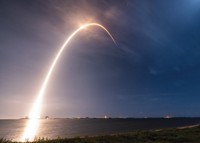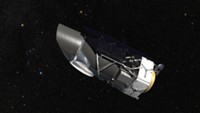Advertisement
Grab your lab coat. Let's get started
Welcome!
Welcome!
Create an account below to get 6 C&EN articles per month, receive newsletters and more - all free.
It seems this is your first time logging in online. Please enter the following information to continue.
As an ACS member you automatically get access to this site. All we need is few more details to create your reading experience.
Not you? Sign in with a different account.
Not you? Sign in with a different account.
ERROR 1
ERROR 1
ERROR 2
ERROR 2
ERROR 2
ERROR 2
ERROR 2
Password and Confirm password must match.
If you have an ACS member number, please enter it here so we can link this account to your membership. (optional)
ERROR 2
ACS values your privacy. By submitting your information, you are gaining access to C&EN and subscribing to our weekly newsletter. We use the information you provide to make your reading experience better, and we will never sell your data to third party members.
Environment
Space-based Probe To Measure Air Pollution
by Glenn Hess
November 19, 2012
| A version of this story appeared in
Volume 90, Issue 47
NASA has selected a proposal from the Smithsonian Astrophysical Observatory in Cambridge, Mass., to build the first space-based instrument to monitor major air pollutants across North America. The instrument—to be completed in 2017 at a projected cost of $90 million—will hitch a ride on a commercial satellite that will orbit Earth at about 22,000 miles above its surface. After being deployed, the space sensor will observe Earth’s atmosphere in ultraviolet and visible light wavelengths to determine concentrations of a variety of atmospheric pollutants. NASA says the instrument will more accurately measure tropospheric pollution concentrations of ozone, nitrogen dioxide, sulfur dioxide, formaldehyde, and aerosols. From geostationary orbit, NASA explains, these observations can be made several times each day when North America is facing the sun instead of once per day, which is the case with current satellites orbiting a few hundred miles above Earth’s surface. “We expect to see significant advances in air-quality research,” says John M. Grunsfeld, associate administrator of NASA’s Science Mission Directorate. “The vantage point of geostationary orbit offers the potential for many new opportunities in other areas of Earth system science.”





Join the conversation
Contact the reporter
Submit a Letter to the Editor for publication
Engage with us on Twitter